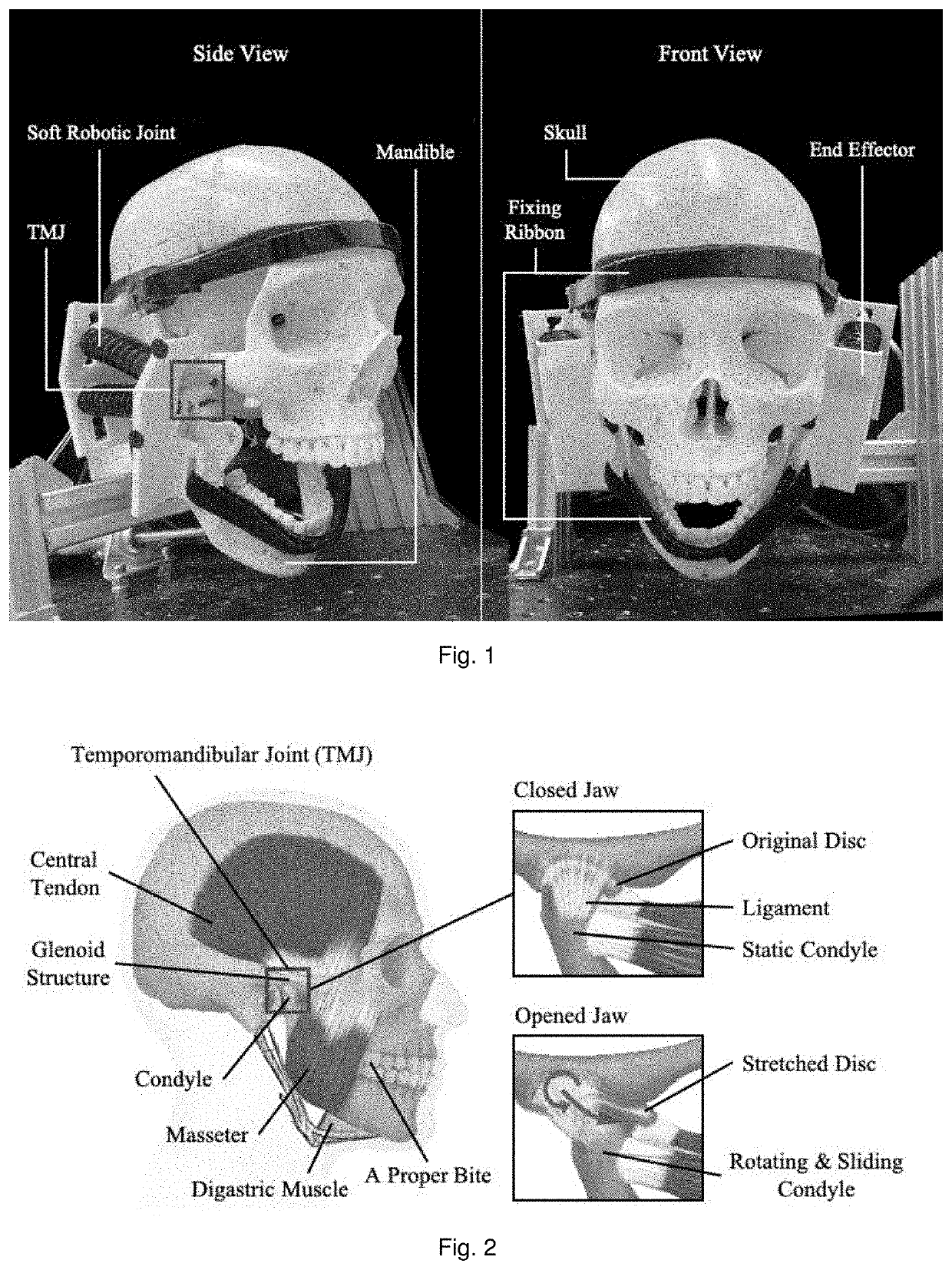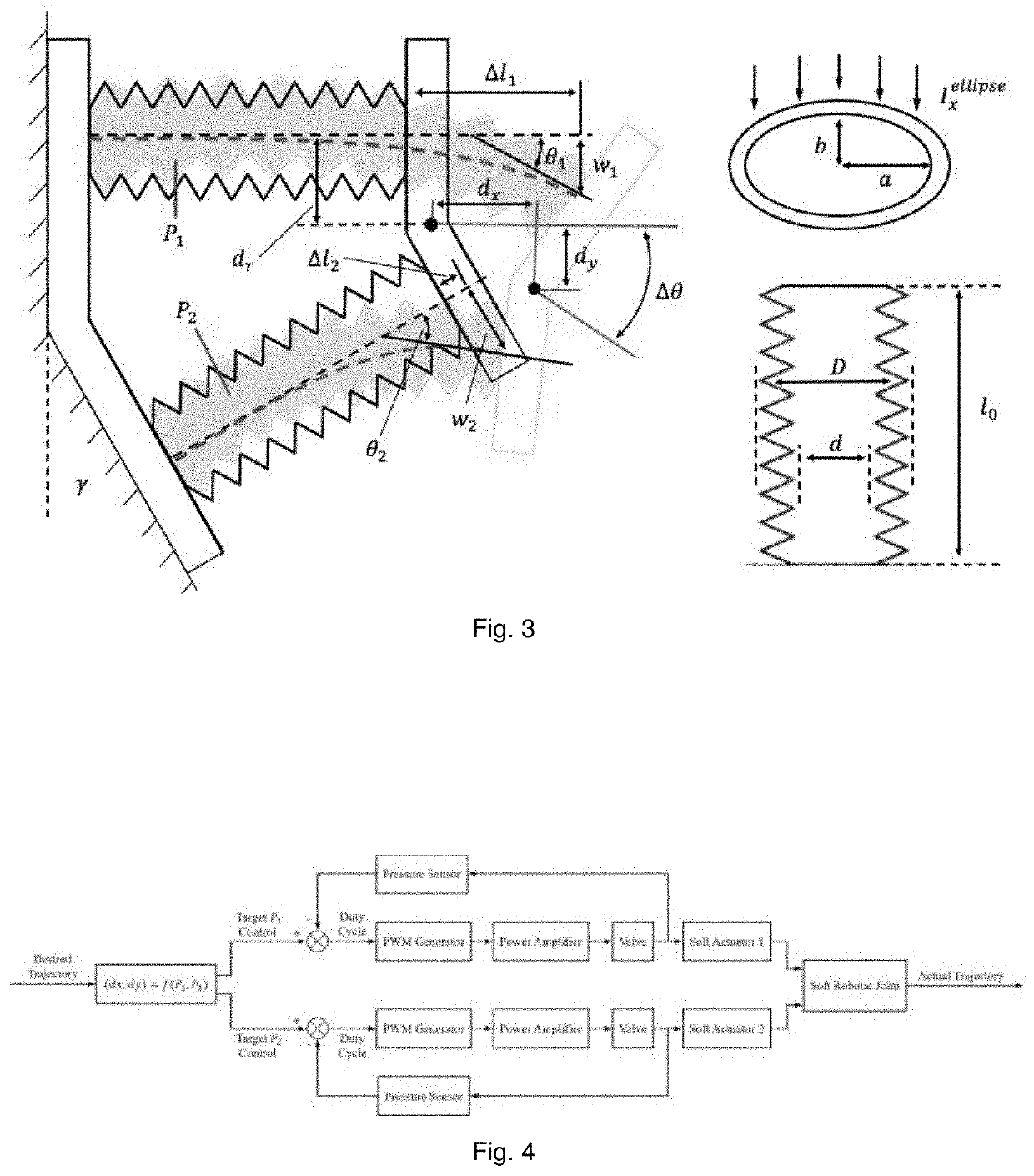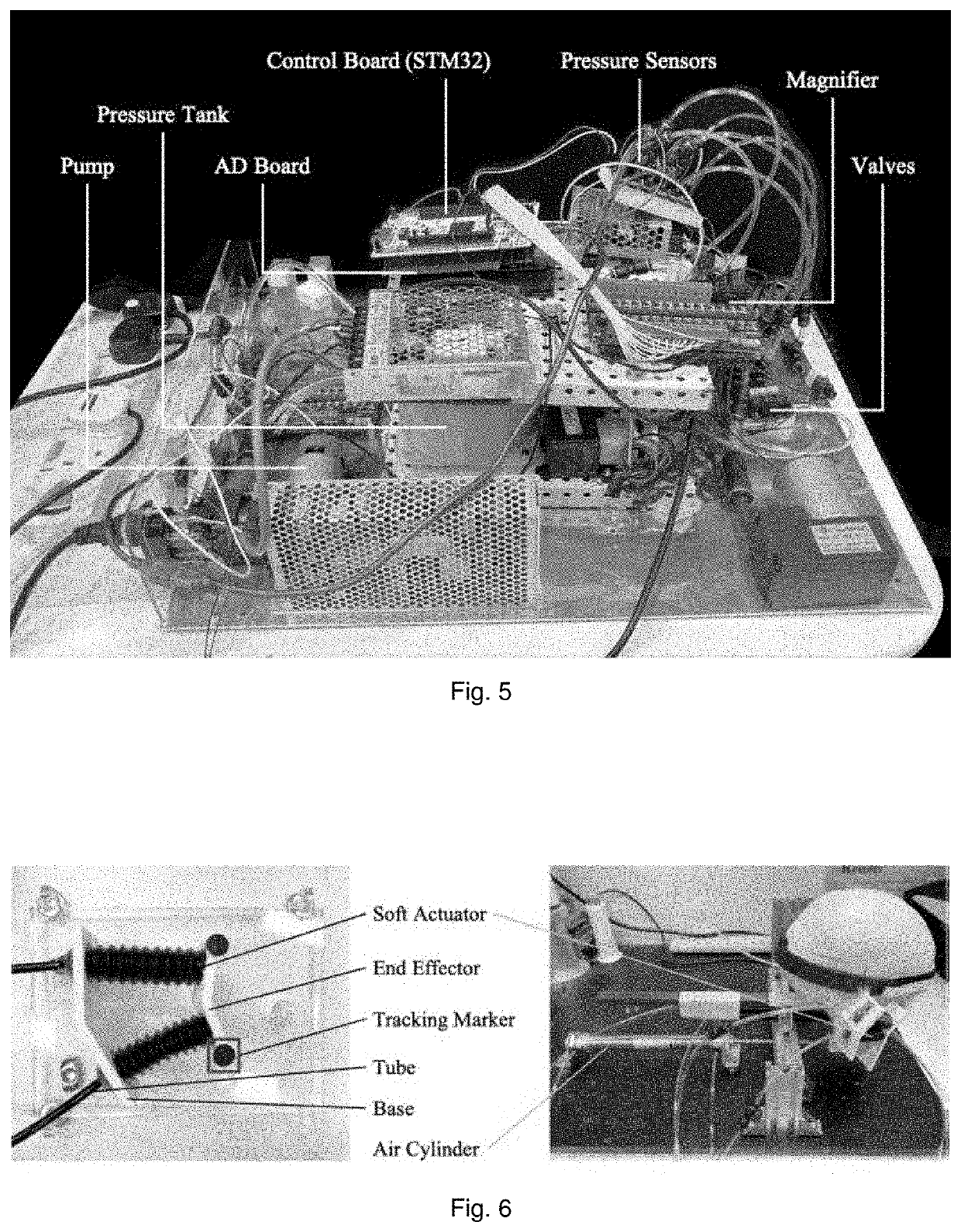Soft exoskeleton wearable device for temporomandibular disorder (TMD) rehabilitation
a wearable device and soft exoskeleton technology, applied in the field of wearable devices for temporomandibular disorders, can solve the problems of patients' difficulty in speaking and chewing food, restricted movement and noise, and large pain, and achieve the effect of reducing the weight of the whole wearable robot and increasing safety and comfor
- Summary
- Abstract
- Description
- Claims
- Application Information
AI Technical Summary
Benefits of technology
Problems solved by technology
Method used
Image
Examples
Embodiment Construction
[0025]The disclosure herein enables the rehabilitation utilizing a soft approach, which is not found in the art. The soft mechanism described herein has at least one of several advantages:
[0026]1. Considering the real human TMJ mechanism;
[0027]2. Lightweight, comfort and safety;
[0028]3. Natural compliance, not causing further injury;
[0029]4. Trajectory planning and customization.
[0030]Current training devices for TMD are bulky and large not made considering the patients' comfort and safety, which aims to forcibly drive the mandible to move. The disclosure herein provides a lightweight and customizable device adopting soft approach to help the patients train correct jaw moving at home by using soft actuators driven by pneumatic control, which is lightweight and compliant to individual differences. Herein is described a wearable exoskeleton device with trajectory planning by pneumatic control. The preliminary pneumatic control for activating the device to replicate human' jaw motion i...
PUM
 Login to View More
Login to View More Abstract
Description
Claims
Application Information
 Login to View More
Login to View More - R&D
- Intellectual Property
- Life Sciences
- Materials
- Tech Scout
- Unparalleled Data Quality
- Higher Quality Content
- 60% Fewer Hallucinations
Browse by: Latest US Patents, China's latest patents, Technical Efficacy Thesaurus, Application Domain, Technology Topic, Popular Technical Reports.
© 2025 PatSnap. All rights reserved.Legal|Privacy policy|Modern Slavery Act Transparency Statement|Sitemap|About US| Contact US: help@patsnap.com



